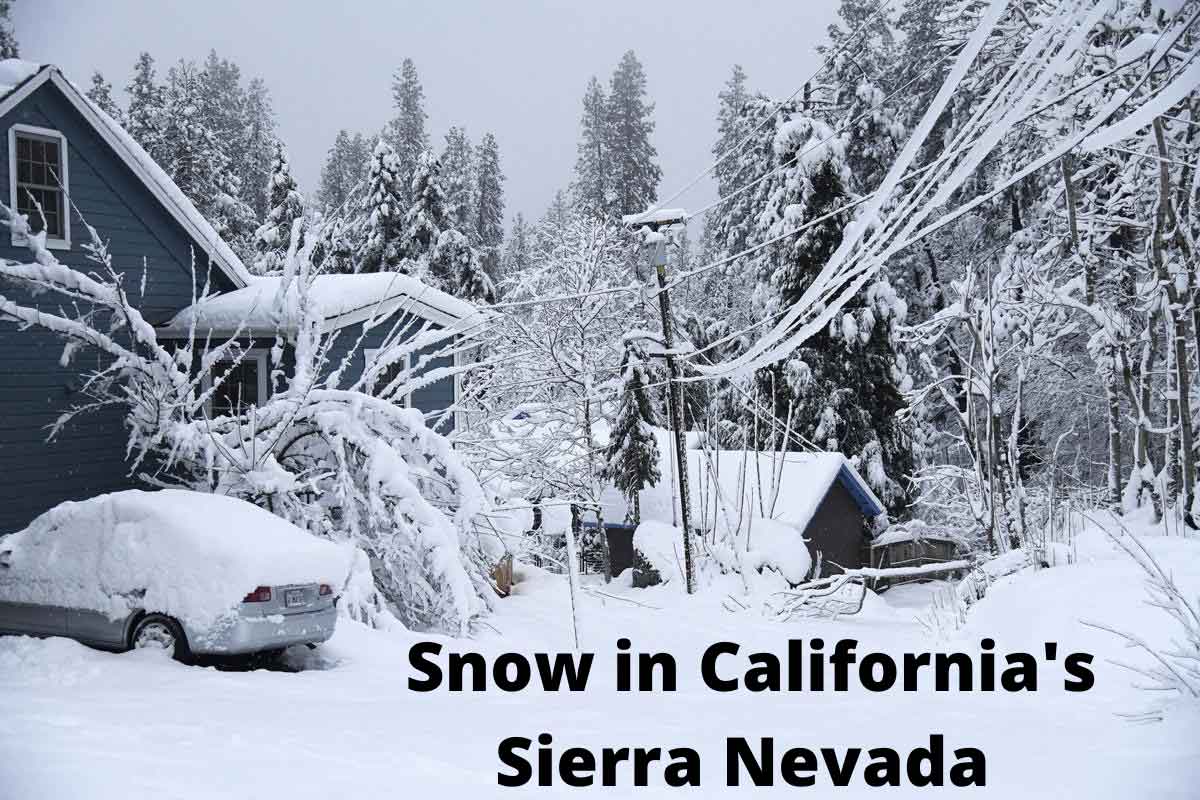Following months of acute drought that led to the water crisis and increased wildfires, heavy snow is falling in the Sierra Nevada and is capable of even breaking the records of decades.
As of Tuesday, over 202 inches of snow, about 17 feet (5.2 meters), had fallen till now this month at the University of California, Berkeley’s Central Sierra Snow Laboratory, at Donner Pass east of Sacramento.
Scientists at the laboratory stated this month is now the snowiest December that has been experienced on record for the location and the third snowiest month overall. The top month was back in January 2017 when 238 inches (6 meters) of snow fell, and it’s not probably enough snow to fall in the coming three days to break that record. Records here return to 1970.
Lab authorities stated that the snow was “deep and hard to get through,” and it took them nearly 40 minutes to reach where the measurements were taken, merely 150 feet away from the front door of the lab.
NEW DECEMBER RECORD: 193.7″
With a 24 hour official #snow total of 38.9″ at the lab, we have smashed the previous record of 179″ of snow in December set in 1970!
Snow rates are still heavy and we could even break the 200″ mark today!#CAwx #CAwater pic.twitter.com/x9g6fRuzHQ
— UC Berkeley Central Sierra Snow Lab (@UCB_CSSL) December 27, 2021
More snowfall will be required
It’s a ton of snow and was much required, though Andrew Schwartz, the lead scientist, and station manager of the Sierra snow laboratory, stated that more will be required by them.
In an interview, Schwartz said “While this event has been amazing so far, we are concerned about the upcoming months not having as many storms,” adding further “If we don’t get another inch, we’re still below what we would expect for the entire winter, which means that we can contribute to the drought rather than resolving it.”
Snowpack in the Sierra Nevada responsible for 30% of California’s freshwater supply
High-elevation snowpack acts as a natural reservoir that simplifies drought, preserving water across the winter months and steadily releasing it by the spring melting season. According to the California Department of Water Resources, snowpack in the Sierra Nevada is responsible for 30 percent of the freshwater supply in California in an average year. The snowpack in the Sierra was at excessively low levels at the end of last winter and reservoirs, which are made up by spring snowmelt, are still below the historical average.

For example, the Lake Oroville reservoir is 37 percent full, which is low in comparison with its historical average of 71 percent around the same period. The Oroville hydroelectric power plant was compelled to close down this summer, as a result of its low water level, for the first time after it opened in 1967.
Mapping Covid-19 Transmission by State: These Areas of the Us Are Seeing the Most Cases
This summer’s drought was the most acute in records of 126 years in California, and July 2021 was the driest month as data obtaining started in 1895. Throughout the region, the magnitude of the drought soared at or above 90 percent since June, with multiple other states completely in drought.
Later in October, California, and parts of the Pacific Northwest experienced rain for which they were waiting. The start of the rainy season led to the strong storms that extract moisture from the Pacific Ocean, cited as atmospheric rivers. These wintertime storms have been critical in ascertaining if California is going to break off in drought. In the earlier two winters, just one such storm laid on meaningful precipitation.
With the increase in climate change, winter temperatures also go up
As climate change increases and winter temperatures accelerate, snowfall is supposed to reduce. Schwartz stated that he is learning that what is utilized to fall as snow is now falling like rain.
Schwartz said “Ultimately, what’s happening right now in terms of climate change with our precipitation here on the summit is that we’re seeing increasing precipitation, but the difference is we’re seeing a reduction in snowfall and an increase in rain,” adding “So that matches our warming signal; with that warming, we have moved away from some of our snowfall.”
Mapping Covid-19 Transmission by State: These Areas of the Us Are Seeing the Most Cases
Scientists have learned that climate change is not only intensifying the severity of acute weather, it is also hampering the natural patterns, which is leading to wild swings between dry and wet extremes. California has experienced this “weather whiplash” in the last few years where atmospheric river storms result in disastrous floods one year and acute drought leading to water crisis the next.
Likewise, Schwartz stated that they observe conditions at the summit switch from a snow-free winter to a snowstorm another season. However, he also asserted that snow is reducing in the Sierra Nevada.
He said “And that’s going to be what we see and what we do see frequently up here,” continuing further “So as those temperatures increase, we’ll see a lot less of the stuff that we had yesterday that had us trudging out for 40 minutes.”
Schwartz seeing the severe consequences of the climate crisis
Apart from record-breaking snowfall, he added that he is already observing firsthand the severe outcomes of climate change in the Sierra Nevada.
He said “Overall, the trends with climate change in the region is kind of a dire one concerning snow, because we’re not going to have it for a whole lot longer,” adding “So when we have months like this, I’m very excited for them.”